The Vasari Corridor, a different look at Florence
The Vasari Corridor offers a unique perspective on the city of Florence; from a privileged corridor of movement for the Medici family to a museum-corridor, it is now part of the Uffizi museum complex and is certainly one of the city’s most extraordinary pieces of architecture, of which it is a feather in its cap. The Corridor was commissioned from architect Giorgio Vasari by Duke Cosimo I de’ Medici in 1565, on the occasion of the wedding between Francesco I de’ Medici and Joan of Austria. The construction of this scenic route allowed not only to flaunt the magnificence of the Florentine house, but also to make it safer and faster for rulers and courtiers to cross the city. Precisely because of this important event, the work was completed in only five months.
The route of the Vasari Corridor runs for about a kilometer, and is designed to unite what were considered the main palaces of Medici power: Palazzo Vecchio, the Uffizi and Palazzo Pitti. And it is precisely from the Sala Verde in Palazzo Vecchio, the former apartment of Eleonora da Toledo, that it begins, and then continues along Via della Ninna toward the Uffizi; crossing Ponte Vecchio, it arrives, passing near the Grotta del Buontalenti, all the way to the Boboli Gardens, and finally inside Palazzo Pitti. The design of the “aerial runner” was probably inspired by the passage connecting the Vatican Palace with Castel Sant’Angelo, built during the papacy of Alexander V. This model and the obvious take on the architecture of ancient aqueducts probably derive from Vasari’s formative years that he spent in part in Rome.
Walking along the Corridor offered the eyes marvelous views of the city, visible from the overlooks and windows designed by Vasari; it was precisely for this reason that in 1595, at the behest of Grand Duke Ferdinand I, it was ordered that all the stores of the “beccai” ( butchers), which were not a pleasant sight, and were therefore replaced by the fine goldsmith stores for which the bridge is still famous today. The route not only crossed the Arno, but also passed through towers and palaces, whose owners were willing to accept the passage; this did not happen in the case of the Manelli family, who refused to grant permission, forcing the architect to bypass their tower. The Corridor also passed through thechurch of Santa Felicita to offer members of the Medici family the opportunity to attend Eucharistic celebrations without mixing with the plebs.

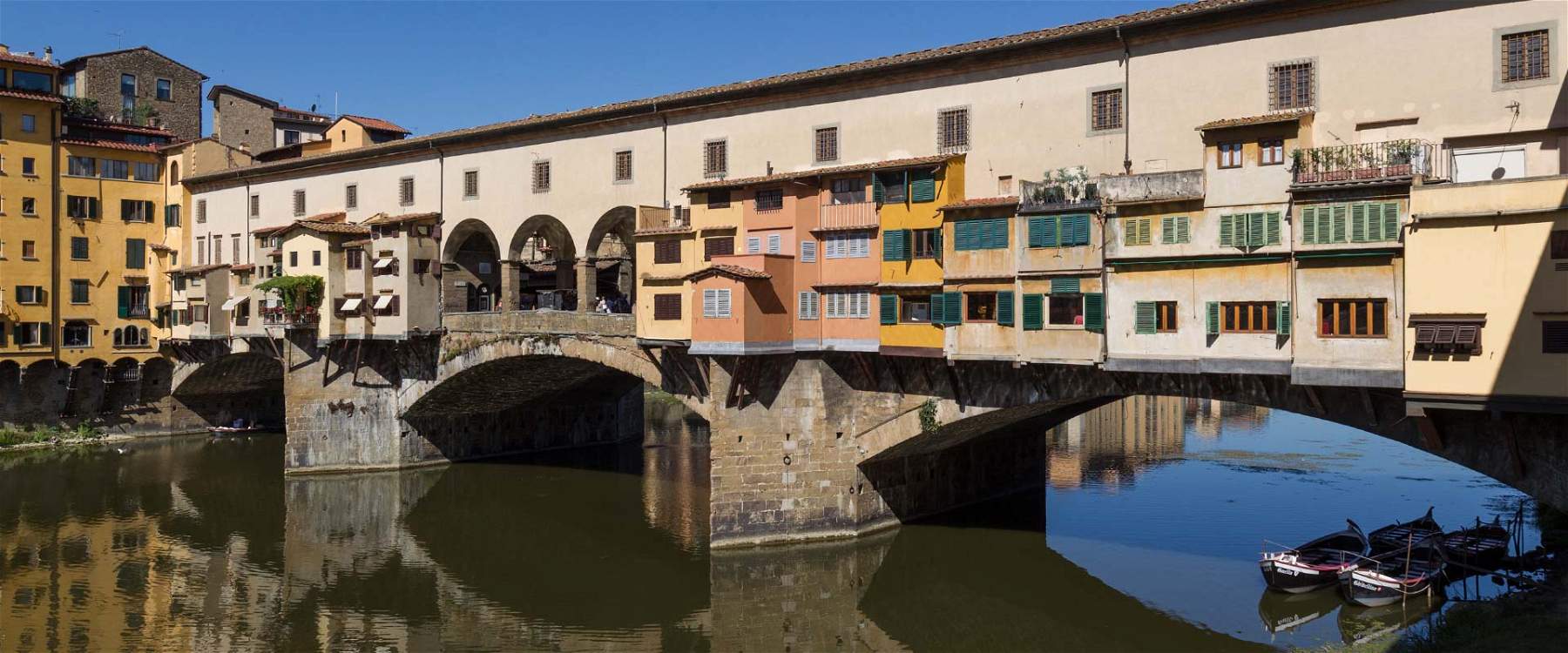
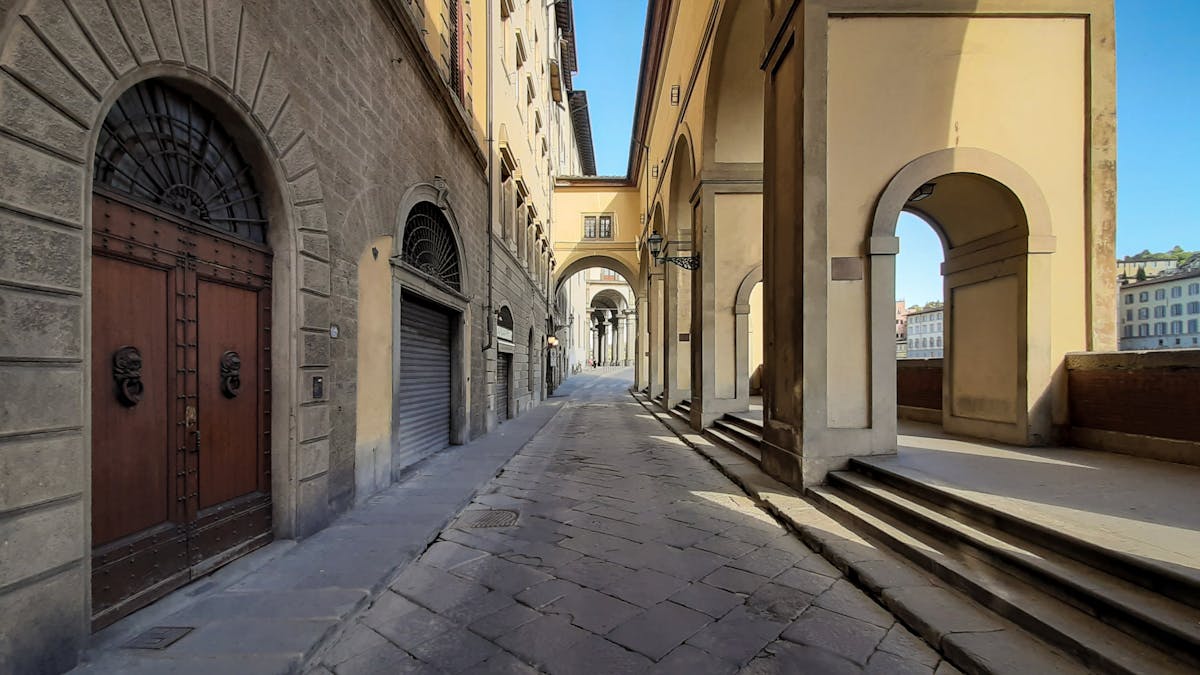
The Corridor was not used with the same frequency over its lifetime: it was used by Grand Duke Francis I only occasionally, mainly to travel to theatrical performances held in the Palazzo Vecchio and the Uffizi. While his successor, Ferdinand I, used it often, with the intention of showing off his power to distinguished guests who visited him, as well as to attend masses in the church of Santa Felicita. Until the 18th century, the Corridor was mainly used with a passing function, which is why it was equipped as a service room with furnishings distributed more for practicality than for ornamentation.
The earliest records regarding theuse of the corridor as an exhibition space date back to 1608, when large monochromes made for the funeral honors of Philip II of Spain were displayed there, to which were added those for the death of Henry IV of France and for Margaret of Austria, which were kept in the corridor until 1825. It was in the Lorraine era, however, that due to the huge growth of the collection, it was necessary to find new places to exhibit, and the Corridor acquired this new function. In the ’’’Inventory of the Royal Gallery,’’ compiled in 1784, paintings placed on the flyover above Via della Ninna are numbered, described as works with gold backgrounds, canvases with views, of both religious and mythological themes, all placed between the 14th AND 17th centuries, while in the section that runs along the Arno River portraits of the Medici house and other illustrious figures were displayed.
After Florence became the capital of the Kingdom of Italy, the Savoys decided in 1866 to make the passage of the Corridor public, and, following the idea of making the Pitti Palace and the Uffizi a single large museum, to use the section on Ponte Vecchio to house Medici drawings and portraits, in the section towards the church of Santa Felicita a group of tapestries, and in the last section of the route, the one along the Boboli Gardens, various sketches by artists. This type of exhibition, completed in 1867, was abandoned after a short time. With the outbreak of war it was cleared of artworks, but the structure suffered damage from bombing; in fact, the flyover on Via dei Bardi was destroyed, which was later restored and partly rebuilt.
After the lengthy restoration by architects Lando Bartoli and Nello Bemporad, in 1952 the Corridor was arranged by the then director of the Uffizi Roberto Salvini to house 175 self-portraits from Cardinal Leopoldo de’ Medici’s collection in the section as far as Ponte Vecchio. The collection before the expansion operation carried out by the cardinal numbered only about fifteen works, but through his agents and acquaintances he added new works to the corpus, whichnow numbers over seven hundred. The works were moved because of the flooding of the Arno River on November 4, 1966. After the flood that hit the city there was extensive damage to the structure that led to a long and complex restoration, which was completed in 1973.
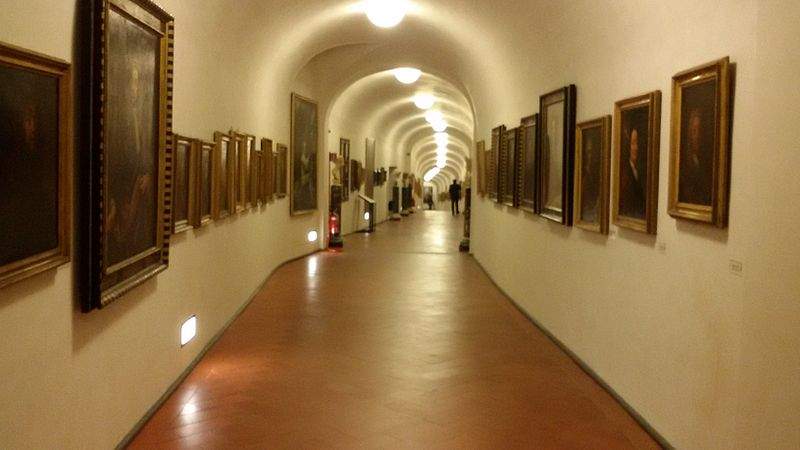
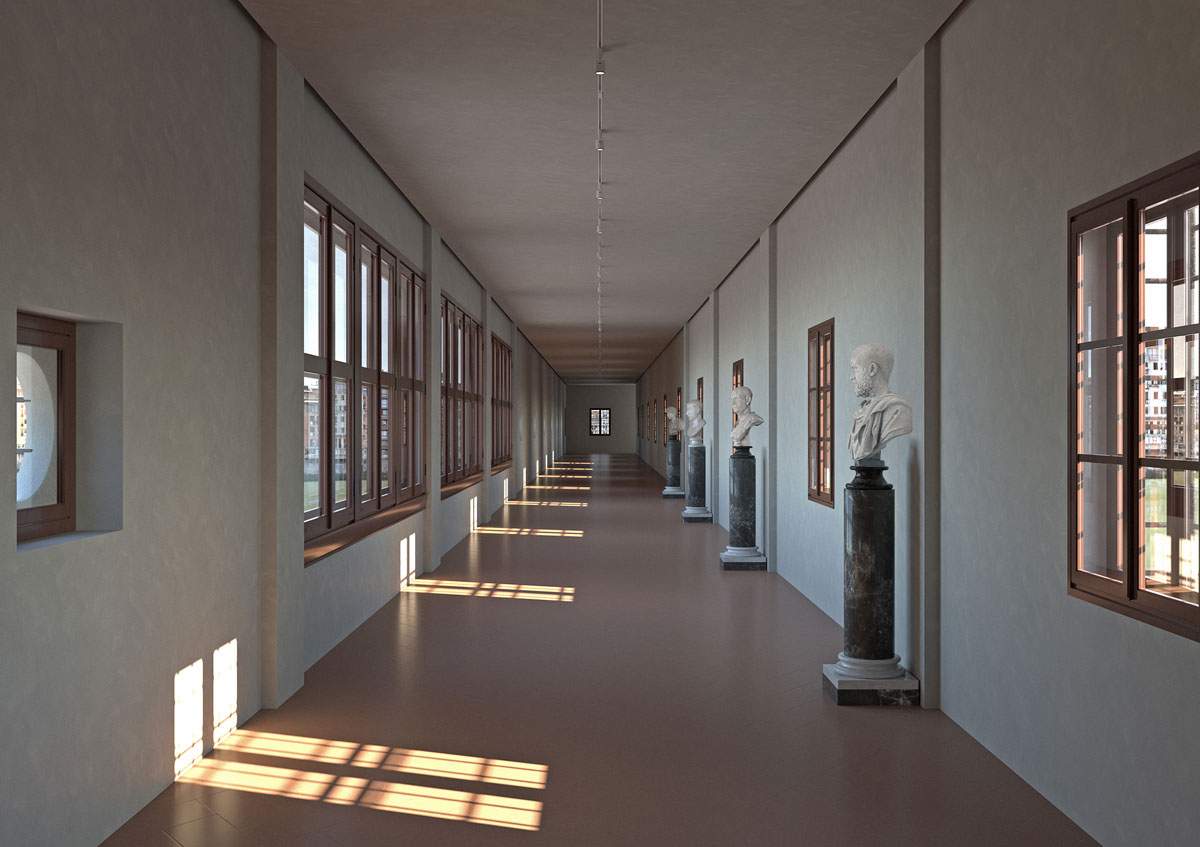
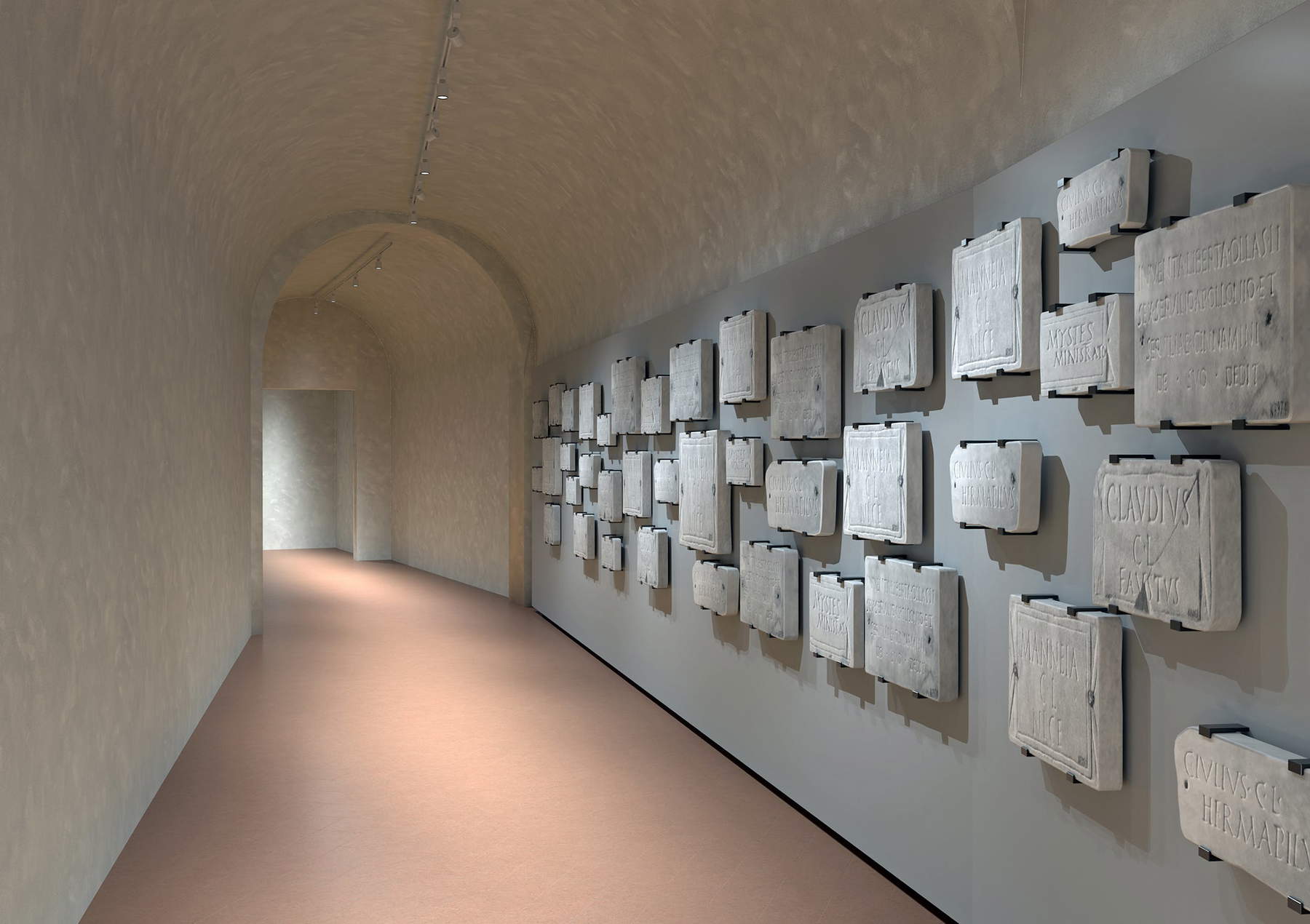 Rendering of the
Rendering of the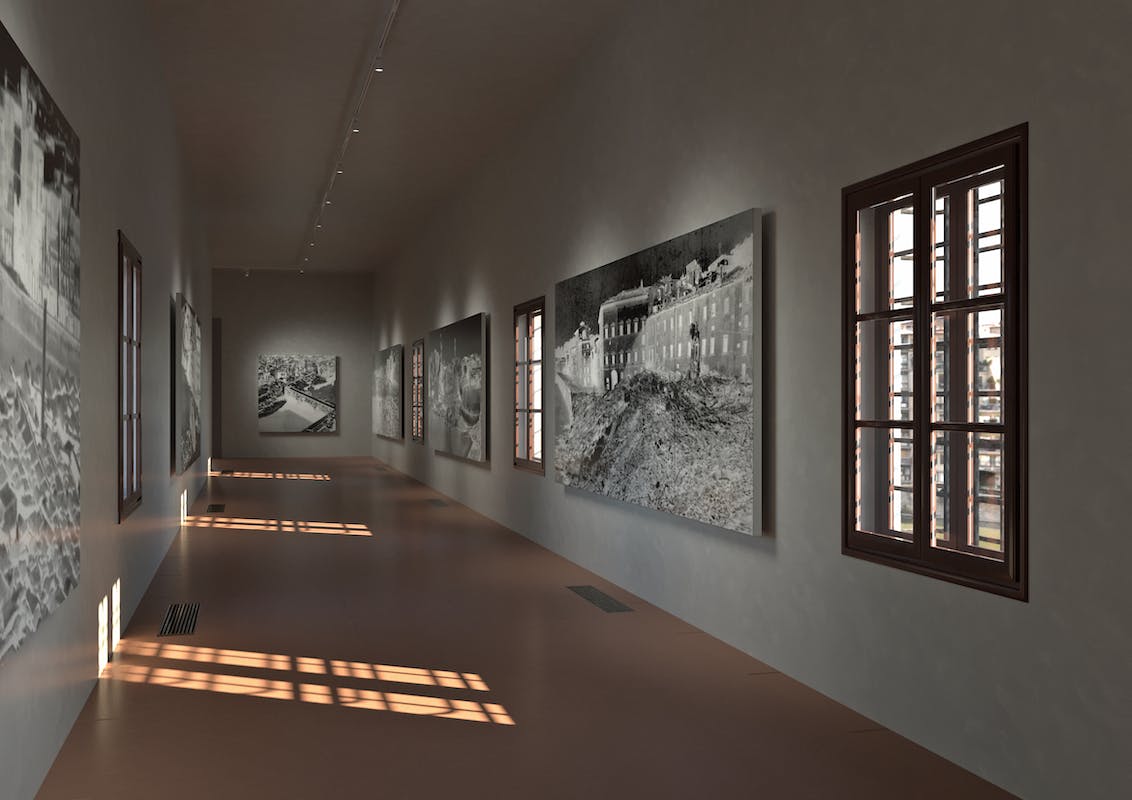 Rendering of the
Rendering of theFollowing the restoration, there was the new museographic rearrangement of the Corridor, carried out by Luciano Berti, who decided to display there the seventeenth- and eighteenth-century paintings that did not find a place in the Uffizi rooms: the collection of self-portraits was thus displayed in the section that runs between Ponte Vecchio and the end of the route, while in the Santa Felicita area sketches of the author were exhibited. The display, except for a few paintings that were replaced, or absent due to restoration, has remained virtually unchanged, except for the collection of sketches, which were moved because of their delicacy and replaced by display cases with portraits and miniatures.
In 1993, on the night of May 26-27, a car loaded with explosives was detonated near Torre dei Pulci. The Mafia-motivated attack, which has gone down in history as the Via dei Georgofili massacre (named after the street where the car bomb was detonated), in addition to causing five casualties, damaged the Uffizi and the Vasari Corridor, causing irreparable damage to the works, which were symbolically put back in place in memory of the massacre.
The Corridor has been going through a long season of restoration and renovation since 2016, when it was closed to visits for security reasons. When it reopens in 2023, the corridor will no longer house the collection of self-portraits, which will be moved to the Uffizi, and in their place we will find works of ancient sculpture. There will also be two memorials, one dedicated to the Georgofili Massacre, with a display of damaged paintings, and the other to the memory of the destruction of Florence during World War II, with photographic documentation of the devastation wrought by Nazi troops.
A place of great peculiarity and suggestion, the Corridor in 1945 briefly abandoned its function, transforming itself into a film set to host the shooting of some scenes of the film Paisà, by director Roberto Rossellini, while in 2013 it appears as an "extra’’ in the best-seller Inferno, by Dan Brown. Visits to the Vasari Corridor will start from a specific entrance located on the ground floor of the Uffizi Gallery, located a ten-minute walk from the Santa Maria Novella train station, while it is not recommended to use a car in the historical center, which is mostly ZTL, so it is preferable to park the car near the station and continue on foot.
 |
| The Vasari Corridor, a different look at Florence |
Warning: the translation into English of the original Italian article was created using automatic tools. We undertake to review all articles, but we do not guarantee the total absence of inaccuracies in the translation due to the program. You can find the original by clicking on the ITA button. If you find any mistake,please contact us.



























